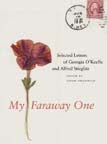
Any Mainer will tell you that it is a strong sense of place that keeps us rooted. And even if we don't stay in our home state, it still permeates our being. So, today I am thrilled (and honored) to introduce you to a new blogger on the block:
The Downeast Dillettante, my friend BWE. For a while now he has been delighting me with late-nite emails chronicling the history and architecture of Down East Maine, and I am happy to say that he now has a space of his own. So, go pour yourself a glass of wine, pull up a comfy chair and click over there because he has a lot of wonderful things to say!
But first, in honor of book week BWE has agreed to tell us about his favorite Maine classics:
*
The Country of the Pointed Firs (1896), by Sarah Orne Jewett ~ This is the undisputed masterpiece of Maine fiction, and one of the minor masterpieces of American literature. Although I admit that the dialect can be annoying to the 21st-century sensibility, the beautifully written stories of the people of Dunnet's Landing are crisply portrayed, and the world Jewett creates is true...I can reach back fifty years into my childhood, squint my eyes a little, and see the last gentle remnants of that world. I defy one to not be moved reading this book.
*
The Beans of Egypt, Maine (1986), by Carolyn Chute ~ One of the surprise bestsellers of a few years ago: Chute, a woman on welfare living without plumbing takes writing class, writes an entertaining book about what she knows, a Maine that the tourists don't see, gets picked up by major publisher, becomes overnight sensation. This book is as true about a certain way of life in Maine as Jewett's is hers. Think of the two as a swim in a sheltered cove, followed by a cold shower.
*
A Goodly Heritage (1932), by
Mary Ellen Chase ~ A highly regarded novelist and Smith College professor, Chase is often considered to be the heir to Sarah Orne Jewett's mantle, with several excellent genre pieces to her credit. This is a fine autobiography, the story of her childhood and her town, and how the two formed her. (Personal note: My great-grandmother was a friend of Chase's from childhood, and always referred to her as Minnie Ella. Her younger sister Mildred taught my father at Academy, and seventy years later will still suddenly spout lines learned during his classical education at her hand.)
*
Charlotte's Web (1952) by E.B. White ~ Need I say more? I like it as much at 56 as I did at 6. And it was just an extra layer of cool to realize that the Fair in the book was the very same one that we tan little children all saved our pennies to go to every fall before school started.
*
The Little Locksmith (1943), by Katherine Butler Hathaway ~ An odd and charming little book, a cult classic up this way. The autobiography of a little girl in Salem, Massachusetts, dwarfed and hunchbacked by childhood illness, telling the story of how she grew up, went to Paris, led an artistic life, and finally, moved to Castine, Maine, where she fell in deeply in love with an 18th-century house, bought it against the wishes of her family, and restored it. Much less prosaic than I've made it sound.
...and if I could make it 10 books, I would add Robert McCloskey's
Blueberries for Sal (or at least tie it with
Charlotte's Web), Samuel Eliot Morison's concise and perfectly researched,
The Story of Mount Desert Island (1960), Eliot Porter's
Summer Island (1977), with his stunning photographs and essay of Great Spruce Head (the same island his brother Fairfield so evocatively painted), Louise Dickinson Rich's
The Peninsula (1958), and lastly,
Candlemas Bay (1950) by
Ruth Moore.


(top: Photographer unknown,
Moore Homestead on Gott's Island, Maine, c. 1910; center:
Miss Jewett's home, South Berwick, Maine, New York Public Library; bottom:
1896 cover of
The Country of the Pointed Firs, designed by Sarah Wyman Whitman, Boston Public Library)


































































